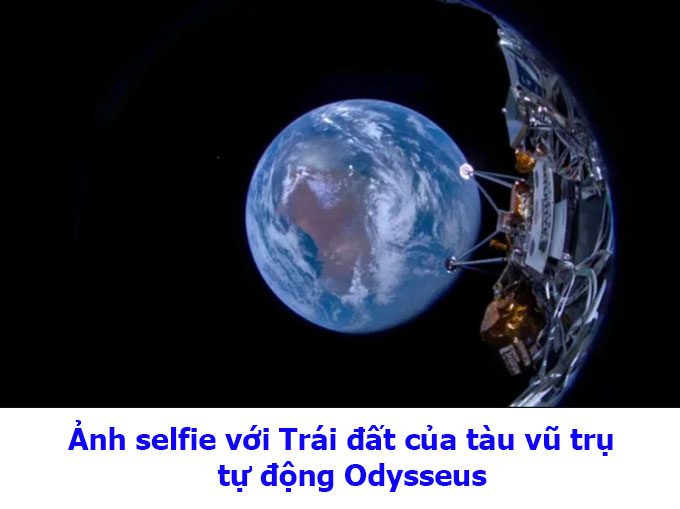The Odysseus Automated Spacecraft from Intuitive Machines captured several selfie images with Earth shortly after its launch on SpaceX’s Falcon 9 rocket on February 15.
Intuitive Machines successfully transmitted the first images from the IM-1 mission back to Earth on February 16. The photos were taken shortly after the lander separated from the second stage of the rocket during its inaugural flight to the Moon as part of NASA’s Commercial Lunar Payload Services (CLPS) program, the Houston-based company shared in a post on social media platform X.

Photo: Intuitive Machines).
CLPS stands for Commercial Lunar Payload Services, aimed at delivering NASA’s scientific instruments on private landers like Odysseus. These instruments are designed to gather data supporting NASA’s Artemis program, which aims to establish a human presence near the Moon’s south pole by the late 2020s. Odysseus carries six NASA experiments and technology demonstration payloads alongside six other private cargo items in the IM-1 mission.
IM-1 is not the first mission to launch under the CLPS program. Previously, Peregrine, a lunar lander manufactured by Astrobotic in Pittsburgh, launched last month on United Launch Alliance’s Vulcan Centaur rocket. The launch went smoothly, but Peregrine experienced fuel leakage shortly after separating from the upper stage of the rocket. The lander was unable to reach the Moon, prompting the team to control its descent, leading to a controlled re-entry into Earth’s atmosphere on January 18.
The flight went much more smoothly for Odysseus. The lander is functioning well and maintained communication with the mission control team as it heads toward the Moon for a landing on February 22. Various systems on Odysseus are operating normally, including the engines. “Intuitive Machines flight controllers successfully ignited the first methane and liquid oxygen engine in space, completing the engine test for the IM-1 mission,” the company announced on February 16.
If the landing is successful, the IM-1 mission will make history as no private spacecraft has ever landed softly on the Moon. The combination of methane and liquid oxygen used by Odysseus is also being utilized in SpaceX’s new massive Starship rocket, which is preparing for its third test flight expected to occur in the coming weeks.


















































